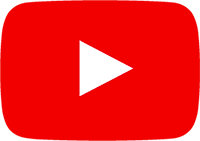
Press Play to start chords


Info about song
"Roadrunner" is a song written by Jonathan Richman and recorded in various versions by Richman and his band, in most cases credited as The Modern Lovers. Critic Greil Marcus described it as "the most obvious song in the world, and the strangest".Rolling Stone ranked it #269 on their list of the 500 Greatest Songs of All Time. As a teenager Richman saw the The Velvet Underground perform many times, and the format of “Roadrunner” is derived directly from the Velvets’ song “Sister Ray”. “Roadrunner” is based on two chords (D and A) rather than “Sister Ray”’s three, but they share the same persistent throbbing rhythm, and lyrics which in performance were largely improvised around a central theme. However, in contrast to Lou Reed’s morally detached saga of debauchery and decay, Richman’s lyrics are passionate and candid, dealing with the freedom of driving alone and the beauty of the modern urban environment, specifically the suburbs of Boston, Massachusetts. The introductory countoff, "one - two - three - four - five - six!", and lyrics about "going faster miles an hour" with the "radio on" have endeared the song to many critics and listeners since it was first released. Richman wrote the song by 1970, when he began performing it in public, aged 19. Former bandmate John Felice recalled that as teenagers he and Richman "used to get in the car and just drive up and down Route 128 and the Turnpike. We'd come up over a hill and he’d see the radio towers, the beacons flashing, and he would get almost teary-eyed. He'd see all this beauty in things where other people just wouldn’t see it."[2] In July 2007, journalist Laura Barton wrote an essay published in the Guardian newspaper on her attempt to visit all the places mentioned in Richman's recorded versions of the song, including the Stop & Shop at Natick, Massachusetts, the Howard Johnson's restaurant, the Prudential Tower, Quincy, Cohasset, Deer Island, Route 128, and Interstate 90. Barton described "Roadrunner" as "one of the most magical songs in existence". Read more on Last.fm. User-contributed text is available under the Creative Commons By-SA License; additional terms may apply.